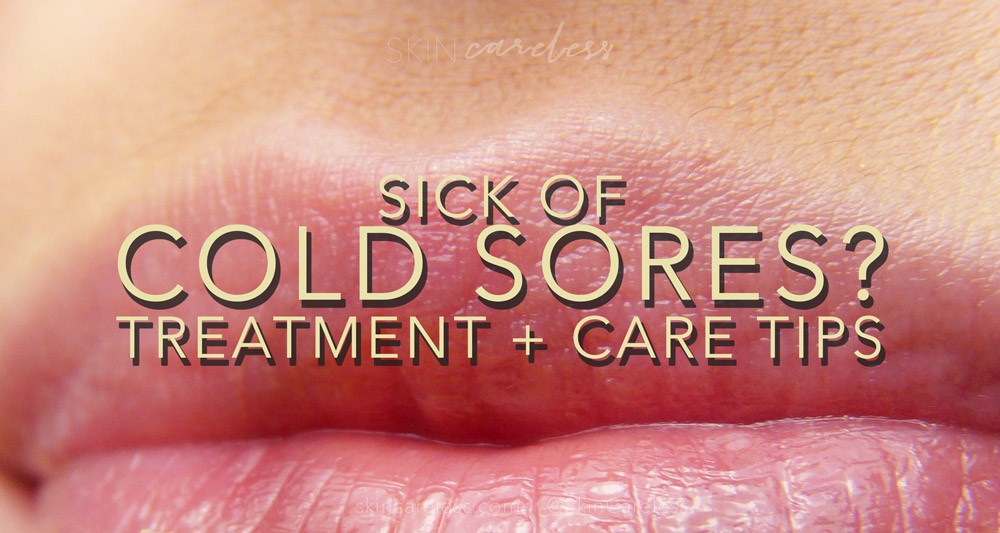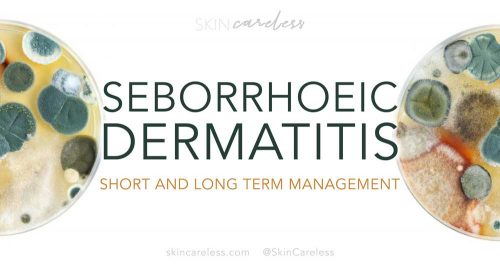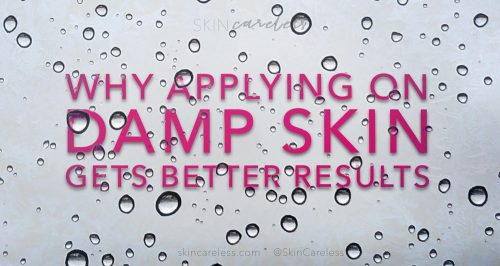Like periods or zits, cold sores seem to be able to sense when you need to look and feel good and arrive just in time to spoil an occasion.
While not usually dangerous for healthy children and adults, they’re painful and a real eyesore, so it’s easy to see why people want to know why they get these sores on their lips and how to deal with them.
Cold sores are foremost a medical issue, so the first plan of action is to go see your physician, get checked out, and be prescribed the best treatment for you.
But once you’ve been cleared by your doctor, you’re usually left wondering what else you could be doing, skin care wise, to make the area look a little less obvious, heal faster, and be more comfortable. That’s where I come in!
With that said, let’s go over all the things you want to know about cold sores and their treatment.
What are cold sores?
A cold sore (also called a fever blister) is a physical wound caused by viral infection of herpes simplex. Once you have herpes, you keep it for life. It lives dormant inside you until an outbreak occurs. These outbreaks (the cold sores) are a physical manifestation of the virus you are carrying. They can appear just once, but often recur several times in your life. They tend to appear on, or right around, the mouth.
How do you get cold sores?
From physical contact with an infected person – often from kissing or other contact. Cold sores are very infectious and very common. It’s estimated that 2 out of 3 people under 50 years of age have the herpes simplex 1 virus.
What do cold sores look like?
They are usually on the lips, on the border of where lip meets skin. They are painful red swellings usually with an open wound in the centre. You can also tell it’s a cold sore thanks to the warm/stinging/tingling sensation you’ll feel as they start to appear. In some people they appear in places other than the mouth though this is far less common.
What triggers cold sores?
As mentioned earlier, these outbreaks are symptoms of the common herpes virus. However, the seemingly random nature of their occurence is often what bothers people the most. It always seems like the most inopportune time when they rear their head. Generally, it’s thought that cold sores are triggered by
- stress
- fatigue
- illness
- hormones
- allergies
- sun exposure (all the more reason to avoid a tan)
How can I prevent them?
Unfortunately, you can’t completely prevent cold sores! But you can avoid the above-mentioned triggers, treat them at the first sign to limit their severity and do some things to prevent further infection or scarring.
How to handle cold sores
Key rule: Don’t spread the infection
Cold sores are highly contagious to yourself and others. This means DON’T touch your mouth and then other areas of yourself or others. Do NOT kiss others until the cold sore is completely healed.
Keep skin care and makeup off the area.
Not only will this avoid spreading infection onto other areas and into your makeup, but it will let it heal without interruption. While a cold sore is tingling, blistering or weeping, it’s still contagious. You will need to throw out or sanitise any makeup that has come in contact with the area around the cold sore. It’s also especially important not to spread the virus to your eyes.
Common topical treatments are doscosanol (Abreva), acyclovir (Zovirax), and penciclovir (Denavir). A doctor can prescribe oral medication to those who suffer with recurring cold sores. The earlier you use these medicines the more effective they are. Apply or take these as soon as you feel the tingling sensation that indicates the arrival of a cold sore.
Stick to plainer meals.
Spicy and acidic foods with sting and irritate the blister.
Skin care tips for cold sores
Aside from the essential obvious medical treatment, there two main skin care tactics to prioritise to make your cold sore less noticeable and more comfortable while it heals.
Protect the wound with the right product to assist healing.
A thick, occlusive product that traps water within the skin (like trusty Vaseline) will keep the wound moist and soft. This will promote faster healing, and reduce the chances of accidentally picking or snagging the scab – thus saving you from unnecessary damage and potential scarring. Put it on every day after your antiviral treatment. Be sure to use a clean finger and wash your hands right after (definitely don’t double dip!).
Don’t pick!
By touching and squeezing a cold sore, you risk getting a secondary bacterial infection and you’ll be spreading the infection with your hands.
As always, if you feel alarming amounts of swelling, pain, redness or fever, or your cold sore isn’t healed in a week, visit your doctor. But basically – leave it alone, apply some antivirals and cover it with vaseline and have patience.
What’s the most inconvenient time you’ve ever gotten a cold sore?





